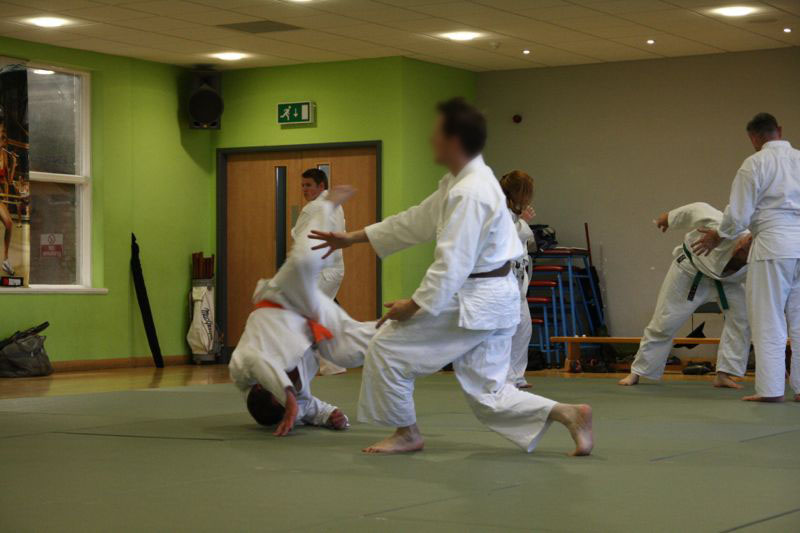
Aikido is a relatively modern Japanese martial art developed by Morihei Ueshiba.
On a purely physical level Aikido is a martial art involving throws and joint locks derived from Jujitsu and other techniques derived from Kenjutsu.
Rather than punching or kicking opponents, Aikido focuses on using their own energy to gain control of them or to throw them. Aikido places great emphasis on motion and the dynamics of movement.
Whether it is applicable self-defense technique, spiritual development, physical health or peace of mind, you can find it in Aikido.
“The Way of Harmony of the Spirit” is one way that “Aikido” may be translated into English. This is still true of Aikido today, although different styles emphasize the more spiritual aspects to greater or lesser degrees. Although the idea of a martial discipline striving for peace and harmony may seem paradoxical, it is the fundamental to the art.
Different styles in Aikido?
Due to the dynamic nature of Aikido, over time, different students of the founder have interpreted Aikido in different ways. Thus different styles of Aikido were born. Each style has its own strengths and weaknesses, but all are firmly rooted in the basic concepts which make Aikido the unique art that it is.
Aikikai
The Aikikai is the common name for the style headed by Moriteru Ueshiba, the founders grandson. Most regard this school as the mainline in Aikido development. In reality, this “style” is more of an umbrella than a specific style, since it seems that many individuals within the organization teach in quite a different manner. The Aikido taught by Ueshiba Sensei is generally large and flowing.
Iwama-ryu
Iwama-ryu seems to resemble the Aikido O Sensei was teaching in the early 50s mainly in the Iwama dojo. The technical repertoire is larger than in most other styles and a great deal of emphasis is placed on weapons training.
Yoshinkan
The Yoshinkan is a harder style of Aikido, generally concerned with practical efficiency and physically robust techniques. It is taught to many branches of the Japanese Police. The international organization associated with the Yoshinkan style of Aikido is known as the Yoshinkai, and has active branches in many parts of the world.
The “Ki” Schools
Ki Aikido places a great deal of emphasis on understanding the concept of Ki and developing this aspect for application to general health and daily life. This style is one of the softest styles of Aikido and is characterized by soft movements that often involve the practitioner jumping or skipping during the movement. Most schools are not concerned with practical application of the techniques, considering them exercises to further develop Ki.
The “Sporting” Styles
Kenji Tomiki, an early student of O Sensei and of Judo founder Jigoro Kano believed that a “rationalization” of Aikido training, along the lines of Judo would make it more easily taught. In addition, he believed that an element of competition would serve to sharpen and focus the practice since it was no longer tested in real combat. Tomiki-ryu is characterized by using Kata (prearranged forms) in teaching and by holding competitions, both empty handed and with a knife.
Aiki-Budo
This is the name given to the art early in its development. It is very close in style to previously existing Jutsu forms such as Daito-ryu Aiki-Jutsu. It is considered to be one of the harder forms of Aikido. Most of the early students of O Sensei began during this period and much of the early practice outside Japan was in this style (e.g. Abbe Sensei’s teaching in the UK in the 50s).

